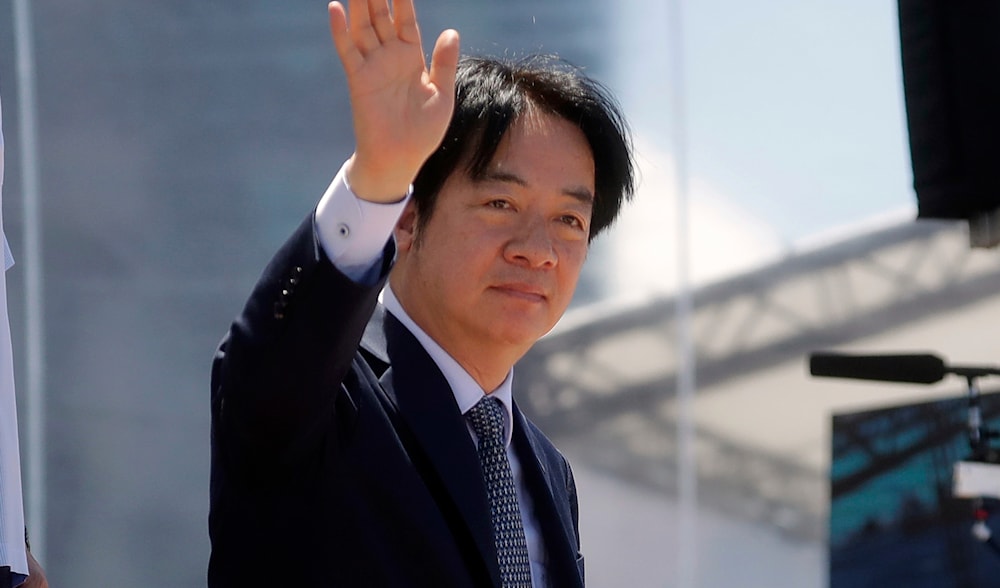Trump slaps 20% tariff on Taiwanese goods
Taiwan faces 20% US tariffs as Trump escalates trade war despite semiconductor dependence.
-

Taiwanese President Lai Ching-te waves after an offshore anti-terrorism drill at the Kaohsiung harbor in Kaohsiung, southern Taiwan, June 8, 2025 (AP Photo/Chiang Ying-ying, File)
The Trump administration has imposed a 20% tariff on Taiwanese goods effective next week. Although this rate is lower than the initially threatened 32%, it still places Taiwan at a disadvantage compared to regional competitors like Japan and South Korea, who secured 15% rates. Taiwan's leadership has described the tariff as "temporary" and remains optimistic about ongoing negotiations.
US-Taiwan economic ties
US-Taiwan economic ties are among the most strategically significant in the Asia-Pacific region. Taiwan ranked as the 7th largest US trading partner in 2024, with bilateral trade hitting $158.6 billion, a 24.2% increase from the previous year. Taiwan's position has surpassed several G20 countries, including France, India, Brazil, and Australia.
Despite this growth, the trade relationship is marked by a large imbalance. The US ran its 6th largest trade deficit with Taiwan in 2024, totaling $73.9 billion, a 54.6% increase from 2023. US exports to Taiwan rose 6.0% to $42.3 billion, while imports surged 32.5% to $116.3 billion.
Taiwan also tightened export controls on Chinese firms, adding Huawei and SMIC to its trade blacklist in June 2025. This aligns with US technology containment strategies and highlights Taiwan’s strategic positioning.
Taiwan's prized semiconductors
Taiwan's economic leverage largely stems from its semiconductor industry, which produces nearly 90% of the world's most advanced chips. These are indispensable to major US firms such as Apple, Nvidia, AMD, Broadcom, and Qualcomm. In 2024, information and communications technology (ICT) products formed the bulk of Taiwan's exports to the US, with automatic data processing equipment and components valued at $51.5 billion, a 140.3% increase.
From liberation day to 20% duties
US President Donald Trump threatened a 32% tariff on Taiwanese goods back in April. The policy was enacted under the International Emergency Economic Powers Act, citing persistent trade deficits as a threat to US national security.
After negotiations, the tariff was reduced to 20% effective August 7, 2025. This rate aligns Taiwan with countries like Vietnam and Bangladesh, and remains higher than the 15% secured by Japan, South Korea, and the EU.
Crucially, semiconductors and other key technology products are undergoing a separate review under Section 232 for national security concerns, with decisions expected in the coming weeks.
Official responses
Taiwan President Lai Ching-te called the 20% rate "temporary" and stressed that negotiations are ongoing: "The 20% tariff rate was never Taiwan's target to begin with. We will continue negotiations and strive for a rate that's more favourable for Taiwan."
A US official echoed that talks are progressing and described Taiwan's proposals as "well received."
Political reactions
The opposition in Taiwan labeled the tariffs as a "heavy blow" to President Lai’s pro-US policy, criticizing the government for being unprepared.
Public sentiment has also shifted: between July 2024 and April 2025, trust in the US among Taiwanese citizens fell from 33% to 24%, while favorable views dropped from 54% to 34%.
Economic impact assessment
According to Yuanta Securities, the 20% tariff affects about 25% of Taiwan’s US-bound exports, particularly in machinery and plastics. The pending Section 232 decision on semiconductors is expected to have a larger impact, given the sector’s centrality to Taiwan’s economy.
Taiwan’s exports to the US accounted for 23.4% of its total exports in 2024. Meanwhile, the US sourced about 44.2% of its logic chip imports from Taiwan. Taiwanese firms have invested around $92 billion in the US, creating approximately 360,440 jobs. Taiwan was the largest foreign investor in the US in 2022, announcing over $30 billion in new projects.

 4 Min Read
4 Min Read










